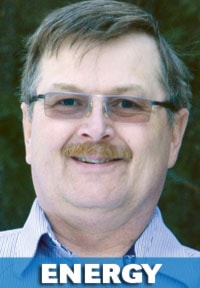Small villages and towns, in remote locations around the world, in most cases generate their own power.
Generally this involves diesel or natural gas fired generators and with the cost of fuel rising steadily this represents an increased tax burden on the inhabitants.
It is in this light that a company in San Diego, Uprise Energy, has developed a Portable Power Centre, PPC, to harness wind power and supplement or replace the use of fossil fuel driven generators.
The PPC uses the latest in control technology and wind monitoring to develop a unit which fits in a sea can and can be towed in by a pickup truck.
With its advanced Energy Conversion System, ECS, it is stated that it can produce 50kW of power in 20 km/h winds. This works out to 15 average homes at 20 km/h winds increasing to 71 homes with 32 km/h winds
Once folded out from its container the turbine stands 24 meters (80 ft.) tall with a weight of 8400kg. (12000 lb.)
Using proven horizontal axis technology and a proprietary Sweep Twist Adaptive Rotor (STAR) it has impressive outputs at relatively low wind speeds and its small foot print will allow for portability, making it a viable contender to supplement remote small town power generation capability.
Using advanced storage technologies, its usability can be designed to overcome periods of low wind.
HAWT, or horizontal axis wind turbine, form the image that comes to mind when we think of wind generation. HAWT is the design used in the vast majority of wind turbines that dot Alberta’s landscape at Trochu, Stettler, Drumheller, Pincher Creek, etc. they are the work horse of the wind industry.
So far, all the advanced concepts and vertical axis wind turbine, VAWT, design developments, as of yet have not been able to compete with the cost effectiveness, and reliability that the HAWT has been able to provide.
Wind power has been used for centuries, now with modern technologies there seems to be a plethora of inventions that make extraordinary claims. It is vital to confirm these assertions with some simple considerations.
Is there a working prototype? Does it make an extravagant claim the design exceeds the long established Betz limit for energy harvesting from wind? Has independent testing from an accredited third party been done to confirm the manufactures claims and determine the actual, not the projected, energy outputs.
Enter Sandia National Laboratories, this Albuquerque based facility has tested Uprise Energy’s portable power center claims for power output. With confirmation of power output and design concept of the first prototypes in place, they stand a good chance of becoming a player in the remote site, energy generation field.
Although design and testing is ongoing, with verification by independent sources, viable means of scalable remote power plants are becoming worthwhile options.
Wind power barriers are falling, one small inspired innovation at a time. With oil at $106 a barrel alternatives are coming into their own; hopefully before we are forced to walk.
Lorne Oja is an energy consultant, power engineer and a partner in a company that installs solar panels, wind turbines and energy control products in Central Alberta. He built his first off-grid home in 2003. His column appears every second Friday in the Advocate. Contact him at: lorne@solartechnical.ca.
